Antarctica: In the Wake of Scott & Shackleton
Few people have ever visited this strange and beautiful territory, with opportunities for non-scientific personnel limited to a handful of tourist expedition ships, Don't miss out - departs Jan 10, 2020
The Ross Sea region of Antarctica is one of the most remote places on Planet Earth and one of the most fascinating places in the continent’s human history. With shipping restricted by impenetrable pack ice to just two brief months each austral summer, few people have ever visited this strange and beautiful territory, with opportunities for non-scientific personnel limited to a handful of tourist expedition ships. Heritage Expeditions offers such a voyage on its own fully equipped and ice-strengthened ship Spirit of Enderby, crewed by some of the most experienced officers and sailors in the world and staffed by a passionate and knowledgeable expedition team. This is a unique opportunity to experience nature on a scale so grand there are no words to describe it.
The Ross Sea takes its name from Sir James Clark Ross who discovered it in 1841. The British Royal Geographical Society chose the Ross Sea for the now famous British National Antarctic Expedition in 1901-04 led by Robert Falcon Scott. That one expedition spawned what is sometimes referred to as the ‘Race to the Pole’. Ernest Shackleton almost succeeded in 1907-09 and the Japanese explorer Nobu Shirase tried in 1910-12. Scott thought it was his, but was beaten by his rival, Norwegian Roald Amundsen in the summer of 1911. Shackleton’s Trans-Antarctic expedition in 1914-17 marked the end of this ‘heroic’ or ‘golden age’ of exploration, but many of the relics of this era, including some huts, remain. The dramatic landscape described by these early explorers is unchanged. Mt Erebus, Mt Discovery and the Transantarctic Mountains are as inspiring today as they were 100 years ago. The penguin rookeries described by the early biologists fluctuate in numbers from year to year, but they still occupy the same sites. The seals, which are no longer hunted for food, lie around on ice floes seemingly unperturbed. The whales, which were hunted so ruthlessly here in the 1920s, are slowly coming back, but it is a long way back from the edge of extinction, and some species have done better than others. Snow Petrels, Wilson’s Storm-Petrels, Antarctic Prions and South Polar Skuas all breed in this seemingly inhospitable environment.
There is so much to do and so much to see here, from exploring historic huts and sites to visiting penguin rookeries, marvelling at the glacial ice tongues and ice shelves, and understanding the icebergs and sea ice. Then there are all the seabirds, seals and whales to observe and photograph, modern scientific bases and field camps to visit and simply the opportunity to spend time drinking in the marvellous landscape that has always enthralled visitors.
Lying like stepping stones to the Antarctic continent are the little known Subantarctic Islands. Our journey also includes The Snares, Auckland, Macquarie and Campbell Islands. They break our long journey, but more importantly, they help prepare us for what lies ahead, for these islands are part of the amazing and dynamic Southern Ocean ecosystem of which Antarctica is at the very heart. It is the powerhouse which drives this ecosystem upon which the world depends.
Arrive at Queenstown, New Zealand’s world famous alpine resort town. Guests should make their way to the designated hotel where we will spend the first night of the expedition. This evening there will be an informal get-together at the hotel for dinner; an excellent opportunity to meet fellow adventurers on
your voyage and some of our expedition team.
Enjoy breakfast at the hotel and exploring the local attractions before heading to the Port of Bluff, where you will embark your ship. Settle into your cabin and join your expedition team and the captain for a welcome on board
Staggeringly, The Snares are home to more nesting seabirds than all of the British Isles put together. Zodiac cruising the coast we learn how the islands got their name and in the sheltered bays we should see the endemic Snares Crested Penguin, the Cape Petrel and Buller’s Albatross nesting on the imposing cliffs.
Characterised by towering cliffs and rugged sea stacks, these islands have borne witness to many a shipwreck in days gone by. We spend the day ashore on Enderby Island which is, perhaps, the most beautiful of all the Sub-antarctic Islands.
Our p[lan is to land at Sandy Bay, one of three breeding areas in the Auckland Islands for the Hooker’s or New Zealand Sea Lion, a rare member of the seal family. Beachmaster bulls gather on the beach defending their harems and mating with the cows shortly after they have given birth of a single pup.
On shore there will be several options, some longer walks, some shorter walks and time to spend just sitting and enjoying the wildlife. The walking is relatively easy, a board walk traverses the island to the dramatic western cliffs from there we follow the coast on the circumnavigation of the island. Birds that we are likely to encounter include the following species: Southern Royal Albatross, Northern Giant Petrel, Auckland Island Shag, Auckland Island Flightless Teal, Auckland Island Banded Dotterel, Auckland Island Tomtit, Bellbird, Pipit, Redcrowned Parakeet, Yellow-eyed Penguin and Light-mantled
Sooty Albatross. There is also a very good chance of seeing the Subantarctic Snipe.
Take the chance to learn more about the biology and history of these islands and the tempestuous Southern Ocean through informal lectures with our experts. This particular stretch of ocean is very productive and we can expect many seabirds, including five or six kinds of albatross and numerous species of petrel.
This remote, rocky outpost which endures roaring westerly winds supports one of the highest concentrations of wildlife in the Southern Hemisphere. Four species of penguin; King, Royal, Rockhopper and Gentoo all breed here. You will never forget your first experience in a ceaselessly active ‘penguin city’, where the dapper inhabitants show no fear of their strange visitors. We will also meet with the Park Rangers, visit the Australian Antarctic Base and observe the hundreds of Southern Elephant Seals along the beaches.
Soaring albatross and petrels circle the vessel as we steam south through the Southern Ocean. Lectures now concentrate on the Ross Sea region and beyond the bow of the ship; drifting icebergs of extraordinary shapes begin to appear. Manoeuvring in close for your first ice photographs we pass the Antarctic Circle and into the continent’s realm of 24-hour daylight.
With unpredictable ice and weather conditions, a day-by-day itinerary is not possible, but we assess the conditions daily and take every opportunity to make landings and launch the Zodiacs. You can anticipate wildlife viewing, visits to scientific bases and historic sites, as well as the spectacular white and blue scenery.
We hope to visit the following areas:
Cape Adare: A large flat spit of land, teeming with the staggering sight of Antarctica’s largest Adelie Penguin rookery: a tumult of chattering, feeding chicks, territorial disputes, petty pilfering and courtship displays. Curious penguins often come very close, offering superb photographic opportunities. Among the shifting mass of penguins we will find Carsten Borchgrevink’s Hut, the oldest in Antarctica, an overwintering shelter for the first expedition to the continent in 1899.
Cape Hallett: The enormous Admiralty Range heralds our arrival; wild and extraordinary, the mountains rear up towering out of the sea to over 4,000-metres high and are bounded by colossal glaciers. We make our landing at an abandoned base site, now home to large numbers of Adelie Penguins and Weddell Seals.
Franklin Island: Desolately beautiful and rugged, this is home to a large Adelie Penguin population and other nesting seabirds. We attempt a landing and explore the coastline.
Possession Islands: Rarely-visited, small and rugged, these rocks support tens of thousands of penguins. Observe the birds’ busy and humorous activity, with the Admiralty Mountains forming a superb backdrop across the water.
Ross Ice Shelf: The world’s largest body of floating ice and a natural barrier, at times creating hazardous weather, with sheets of snow blown at gale force by winds off the polar ice cap. Just 800 miles from the South Pole, this daunting spectacle prevented many early explorers from venturing further south. We cruise along its dizzying 30-metre high ice cliffs, perhaps lucky enough to see icebergs ‘calving’.
Ross Island: Mount Erebus/Cape Bird/Shackleton’s Hut/Scott’s Hut(s) and visits to a scientific field station (Scott and McMurdo Stations are high on our wish list but ice, weather and station operational requirements often make them inaccessible). Ross Island was, and is, the ‘hub of activity’ in the Ross Sea, dominated by Mt Erebus, a monstrous active volcano named after the ancient Greek God of Darkness. The carefully preserved huts of the ‘Heroic Era’ help make the history come alive. If we can reach the bases, we will get a modern perspective on Antarctic Research.
Terra Nova Bay: An Italian research station where the scientists are always hospitable and enjoy showing us around their lonely but beautiful home. They share with us their scientific research and also, perhaps, the best ‘espresso’ in Antarctica!
Taking time to rest and enjoy life on board Spirit of Enderby in the bar or library after the excitement and long daylight hours of the Antarctic, we have time for lectures on our final destination and for some pelagic bird spotting.
We drop anchor in Perseverance Harbour, an occasional refuge for Southern Right Whales who come here to calve. Walk to the nesting site of the Southern Royal Albatross and see the strange and beautiful megaherbs on the hills. These huge wild flowers that have adapted to the harsh conditions have unusual colourings and weirdly-shaped leaves. We also seek out other wildlife such as Campbell Island Shags, Light-mantled Sooty Albatross and sea lions.
Relax and reflect on a remarkable journey as you join our experts for a recap of highlights and enjoy a farewell dinner this evening.
We disembark in the Port of Bluff and this adventure ends as we disperse to begin others. After fond farewells we transfer you to either Invergargill or Queenstown airport.
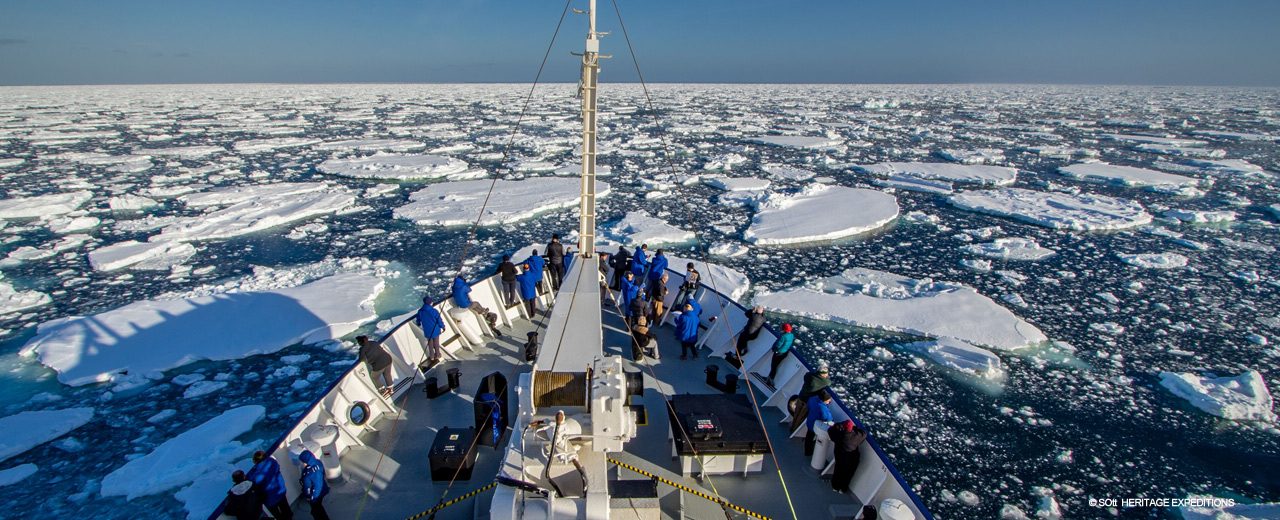
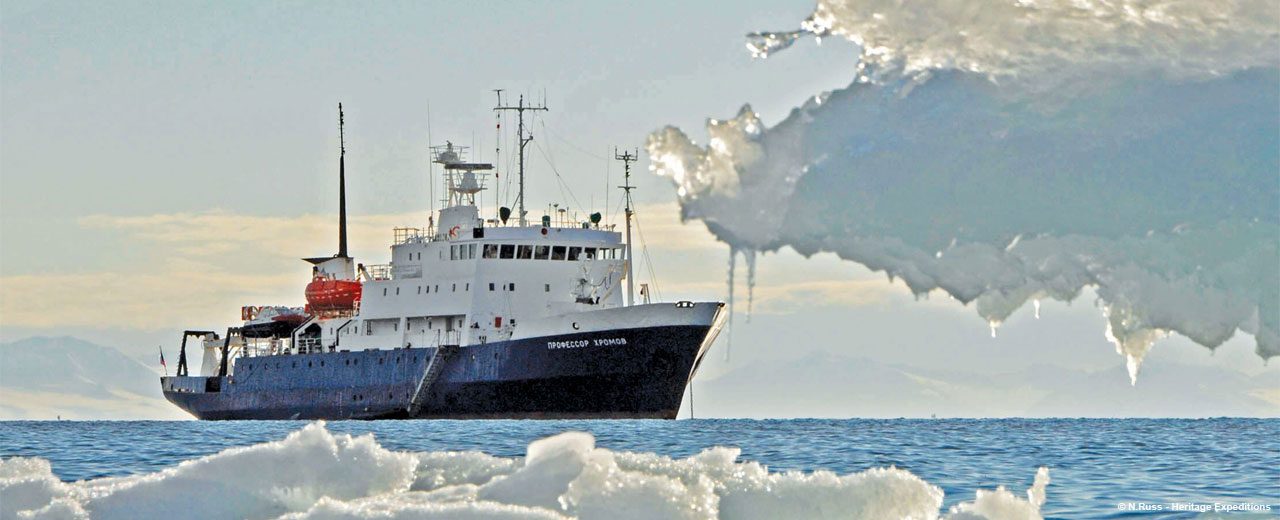
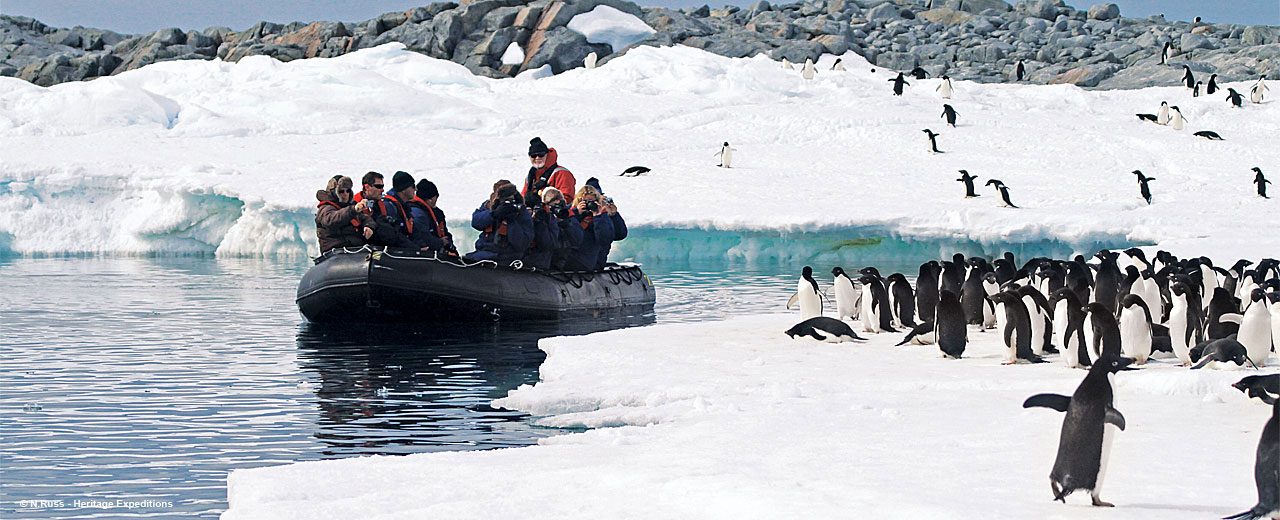
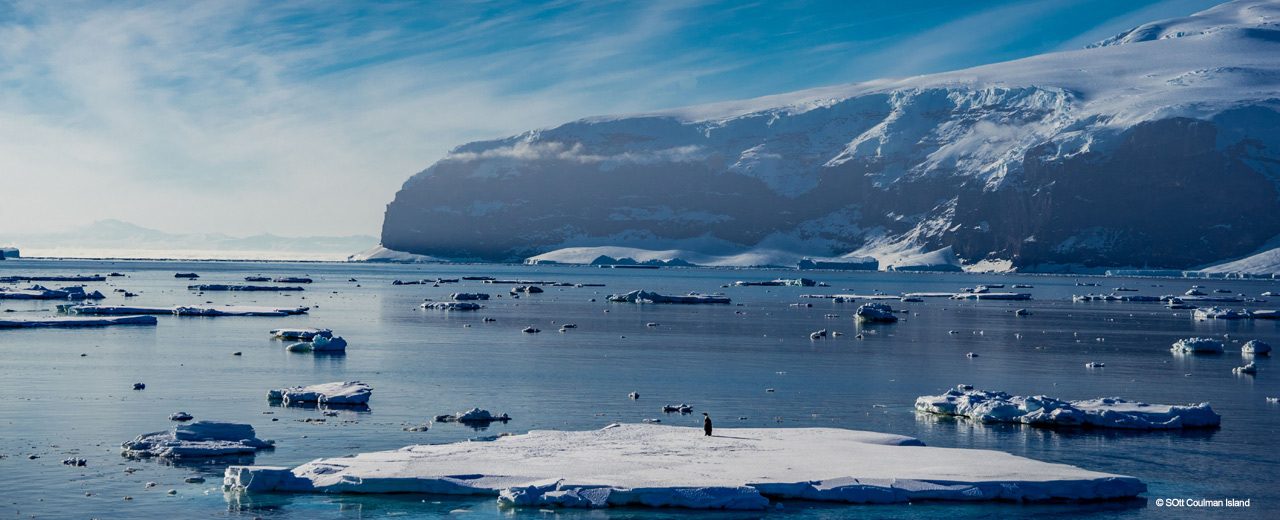
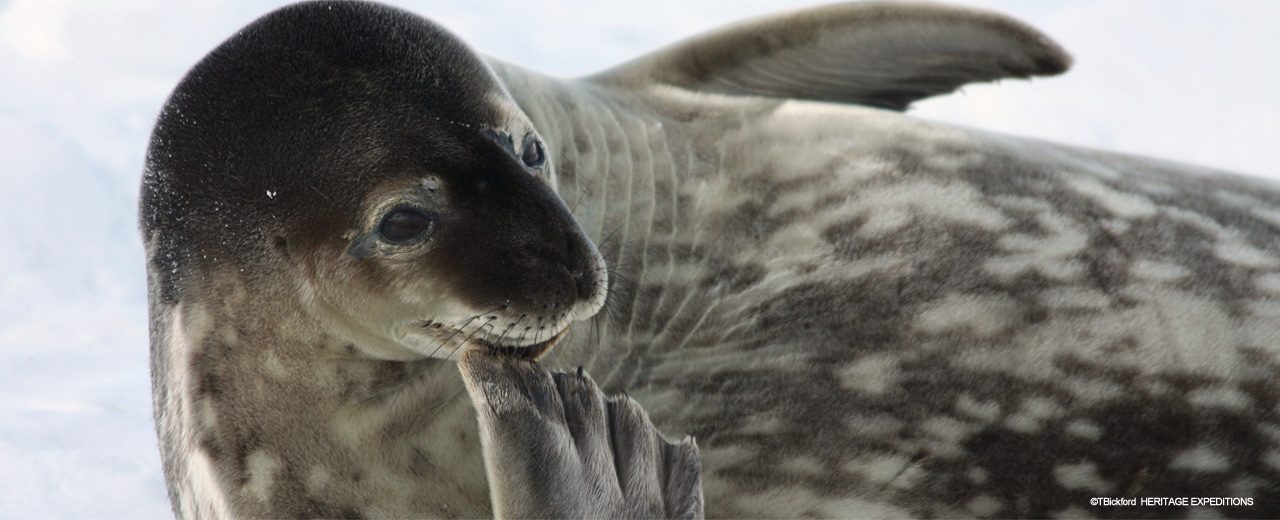
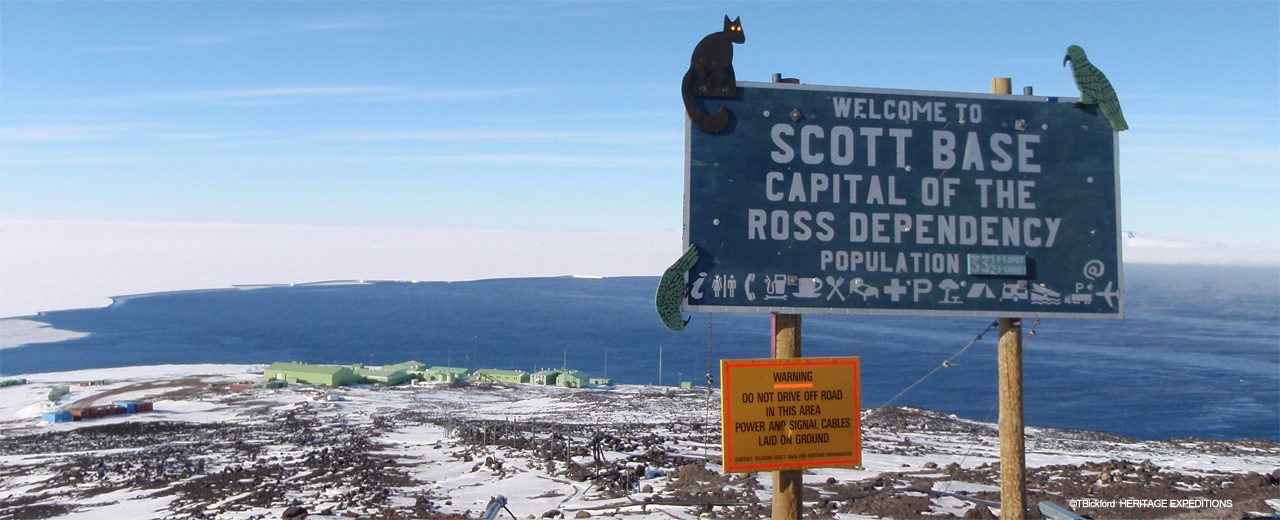
Price
Main Deck Triple: $ 42,000 pp
Main Deck Triple Cabins on Deck 3 are a spacious 22m2 and feature two porthole windows, two single beds and one Pullman bed which folds down from the wall, comfortable lounge, writing desk, private en-suite with shower, ample storage
Main Deck Single $57,500 pp*
Main Deck Single Cabins on Deck 3 are a spacious 22m2 and feature two porthole windows, king bed, comfortable lounge, writing desk, private en-suite with shower, ample storage and a flat screen entertainment system.
Superior Deck 4 $46,750 pp*
Superior Cabins on Deck 4 are a spacious 22m2 and feature large panoramic windows, king or two single beds, comfortable lounge, writing desk, private ensuite with shower, ample storage and a flat screen entertainment system.
Superior Deck 5 $48,250 pp* Superior Cabins on Deck 5 are a spacious 22m2 and feature large panoramic windows, king or two single beds, comfortable lounge, writing desk, private ensuite with shower, ample storage and a flat screen.
Superior Triple $43,990 pp*
Superior Triple Cabins on Deck 5 are a spacious 22m2 and feature large panoramic windows, two single beds and one Pullman bed which folds down from the wall, comfortable lounge, writing desk, private en-suite with shower, ample storage and a flat screen entertainment system.
Superior Single $58,250 pp*
Superior Single Cabins on Deck 5 are a spacious 22m2 and feature large panoramic windows, king bed, comfortable lounge, writing desk, private ensuite with shower, ample storage and a flat screen entertainment system.
Worsley Suite $58,250 pp*
Located on Deck 6, Worsley Suites are a spacious 22m2 and feature large panoramic windows, king or two single beds, comfortable chaise-style lounge suite, writing desk, private en-suite with shower, ample storage and a flat screen entertainment system.
Heritage Suite: $ 85,000 pp
Large lounge area, separate bedroom with double bed, single bed in the lounge, writing desk, wardrobe, drawers, and fridge. There is a private bathroom with shower, toilet and washbasin. Large forward and side facing windows with great views.
Inclusions
* The prices listed include the additional local payment of AU$1,440 (All prices are per person in AU$).
- Local payment, pre/post cruise transfers,
- one night hotel accommodation in a twin share room (incl.dinner/breakfast),
- all on board ship accommodation with meals, house beer, wine and soft drinks with lunch and dinner and all expedition shore excursions.
- Programme of lectures by noted naturalists
NOT INCLUDED:
- All items of a personal nature, laundry, drinks, gratuities.
- International/domestic flights,
- Visas and travel insurance
DEPARTURES
9 Jan – 5 Feb 2024
4 Feb – 2 Mar 2024

